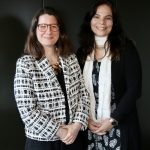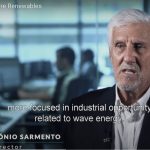Climate change — breakdown or breakthrough?
Developed countries will have to stump up trillions of dollars to help developing countries towards energy transition if the world is to achieve the zero carbon economy set out by the Paris Agreement in 2015.
This was the stark warning and wakeup call from Jorge Moreira da Silva, United Nations Under Secretary-General and Executive Director of The United Nations Office for Project Services (UNOPS) during his address to the International Club of Portugal (ICPT) in Lisbon on Friday.
The warning was timely. It came just days before the United Nations convenes the Sustainable Development Goals (SDG) Summit on 18-19 September at its Headquarters in New York, during the General Assembly’s high-level week of conferences and debates on climate change.
With the 2030 Agenda for Sustainable Development at midpoint, world leaders will carry out a comprehensive review of the state of the 17 Sustainable Development Goals (SDGs), respond to the impact of multiple and interlocking crises facing the world, and provide high-level political guidance on transformative and accelerated actions towards the target year of 2030.
It also preceded the 8th edition of the Sustainable Investment Forum North America taking place during Climate Week New York (September 17-24) on September 19 when world leaders from finance, governments, business and societal projects are converging at the UN to discuss methods to conserve natural resources, decarbonise international markets and mobilise public and private finance to drive a green and inclusive net zero global economy.
That same week there the Climate Ambition Summit 2023 is to be held at the United Nations Headquarters on September 20, followed by Global Climate Change Week, running between October 16-20 — the annual gathering of climate leaders from the academic, business, public and nonprofit sectors, running with this year’s theme: “Advancing Nature and Positive Solutions for Net Zero and Sustainable Future”.
So, it is a busy six weeks ahead for climate change activists and stakeholders in multiple spheres from business to science and nature to social and health policymakers .
“We are literally at the limit of ‘breakdown or breakthrough’ where either there is a collapse or a breakthrough. It is a defining moment in terms of the possibilities that we’ll have to limit rising temperatures and combat inequalities and promote peace.”
This set of policies was outlined in 2015 – at the highest point of multilateralism since World War II – when the UN managed to thrash out agreements with a number of international entities, such as the Paris Agreement on Climate Change, which included 200 countries that reached an agreement on 17 sustainability goals seeking a response for peace, planet, people, prosperity and partnerships.
There was also in 2015 an agreement on financing sustainable development to support poorer countries with the expectation that the private sector should be part of this effort.
“All of this took place in 2015, but unfortunately a lot has happened since then that thwarted this great moment of multinational hope,” said the UN executive director.
These crosswinds have included an increase in tensions between the US and China, the failure of the US and Europe to sign a trade agreement that had been expected for years – Transatlantic Trade and Investment Partnership (TTIP) — the rise and propagation of protectionism, populism and radicalism worldwide, while over 50% of the world’s population is now living under autocratic regimes.
Then, more recently, there have been the shocks of the Covid-19 pandemic, the fuel and inflation crises, and Russia’s invasion of Ukraine, not to mention the Syrian refugee crisis, and a number of crises in Africa with several coup d’ États, the number and likes of which have not been seen in 20 years.
The Portuguese ex-minister of the Environment, Territorial Planning and Energy who was appointed by fellow Portuguese and one-time prime minister UN Secretary-General António Guterres to support the execution of projects and infrastructures geared towards security, peace and sustainable development all over the world, pointed out that all these shocks had occurred over the past eight years. (Since 2015)
“We are at the moment of truth as to whether we want to take the agreement signed in 2015 seriously and resolve the crises established in 2015, but also the current situation of multi crises that have accumulated and feed on each other”, said Moreira da Silva.
Where are we now?
In practical terms of the commitment required for development financing in the developing world, this has gone from US$2.5 trillion in the annual deficit to help these countries to US$3.9 trillion in the pandemic year.
According to the UN, the original climate finance commitment set in 2009, which aimed to mobilise US$100Bn per year for developing countries by 2020, has not been met and will expire in 2025.
It’s also understood that the US$100 billion goal is a fraction of what is needed to support developing countries to achieve climate goals in accordance with the Paris Agreement.
In the United Nations Framework Convention on Climate Change’s recent analysis of financing needs, developing countries require at least US$6 trillion by 2030 to meet less than half of their existing Nationally Determined Contributions.
To put that challenge into perspective, estimates by the Organization for Economic Co-operation and Development (OECD) and Oxfam suggest that the actual flow of climate finance alone from developed to developing countries in 2020 was between US$21Bn and $83.3Bn — not even close to the US$6 trillion mark.
And the amount of financial aid needed by developing countries because of the pandemic and related factors since actually increased by 50% per annum alone during the pandemic period: “We are far off the mark”, said Moreira da Silva.
Climate change
When it comes to climate change, the current trajectory for global warning is 2.7ºC to 2.9ºC by the end of the century.
And of the 17 measures and 23 targets set out in the 2015 Paris Agreement (COP 15), only 12% of the targets have been achieved and 30% of cases have taken a backward step.
“We’re not just off course, we’re actually going backwards, so it’s not just a problem of speed, but we’re also off course and going in the wrong direction”, lamented the UN executive director.
4 goals to get back on track
Jorge Moreira da Silva outlined 4 goals to get the 2015 commitments back on track: first: a New Agenda for Peace.
Today, 25% of the world lives in countries in conflict and at war. The number of deaths from these conflicts is at its highest in 28 years. Military expenditure has reached a world record in 2023 at US$2.5 trillion. As for nuclear tensions, these have risen again over the past two years. Some 50% of the conflicts in the world have become international. “The idea that a civil war can be localised is wrong. As a rule they become regional and in some cases almost global,” he said, adding that the situation compounds to cause displaced populations, with around 100 million having to leave their homes within a county, and around 35 million ending up as refugees abroad.
“We are talking about levels of displaced peoples and refugees that have not been seen since the end of World War II, so we needs an agenda that prioritises peace and conflict resolution and prevention. Only 2% of the US$200Bn of public funds donated to developing countries goes on conflict prevention”, said Moreira da Silva.
Second: The Climate Crisis: this has a triple dimension: Climate, Biodiversity, and Pollution.
“We will not be able to eradicate poverty and inequality if we don’t deal with these inter-linked problems. We cannot go around pigeon-holing environmental themes if we don’t work on all three together — they are all interlinked.
“We have very few months left to achieve the goal of keeping global temperatures at the 1.5% target. Many think it’s too late, I don’t. Two-hundred countries decided in 2015 that for a stable temperature we needed to limit the temperature to the pre-industrial levels of 1750.”
“The only way to do this is to achieve carbon neutrality and zero emissions by 2050 and cut 45% of emissions by 2030, but the figures don’t add up, and if we continue on as we are on our present trajectories we’ll have global warning at between 2.7-2.9%,” warned Jorge Moreira da Silva.
To have some notion of the devastating effects from such an increase, it is worth remembering that the difference in global temperatures been the Ice Age and Non-Ice Age was just 6º centigrade.
It means that parts of the world will become uninhabitable, there will be a spread of (topical) illnesses that are not traditional ones associated with Western European climates, the destruction of the coastline, and the destruction of many social, economic and ecological systems.
“The ministers and heads of States are announcing measures that aren’t even prepared to action. By 2030 we will achieve a reduction of just 5% in greenhouse emissions when it was agreed that by 2030 the reduction would be 45%,” he regretted.
”We’re not going to be able to achieve carbon neutrality by 2050 if by 2030 we will have just achieved around a 5% reduction when it was supposed to be 45%”.
Third: Poverty. Carbon reduction and climate change can hardly be achieved while so many people in the world have little to eat, have no electricity and no education. “There are 650 million people who don’t have electricity and 800 million living in extreme poverty,” said Jorge Moreira da Silva.
“Are we going to tell countries in Africa that they have to combat poverty, eradicate inequalities, secure running water supplies and sewage and drainage systems, and have electrical mobility, renewable energy and electric cable supplies with the kind of basic local economies and low budgets and debt that they have?” asked Jorge Moreira da Silva adding that this could only work with international solidarity.
And warned: “We could end up becoming completely carbon neutral in Europe and yet still suffer adverse environmental effects from the other countries that aren’t. It’s only enough for India, whose need for energy is growing rapidly, to be consuming the same energy as China, to have a 2.5º increase in global temperature even if Europe and the US do achieve carbon neutrality,” he added.
In fact 90% of the world’s emissions come from developing countries, so the targets cannot be achieved without joint financing contributions from the developed world.
“We need US$6 trillion of investment per annum for decarbonisation, US$1.7 Trillion for energy transition, yet today the financial support to counter climate change is only in he order of US$800Bn”, he warned.
“We are not on track for 2030, let alone 2050, and we’re not showing that level of solidarity with developing countries that is required”, he said.
Biodiversity
The scenario is not much better in terms of protecting and restoring biodiversity, the fourth target on the lost of challenges. Around 96% of mammals on the planet at present are human beings and the domestic animals that are our food sources. The rest has almost gone.
Some 70% of the world’s birds are basically turkey and chicken; the rest is disappearing. “We have a biodiversity extinction rate that is 1000 times more than in the last tens of millions of years.
Jorge Moreira da Silva emphasised: “We have lost 40% of our natural capital while our productive capital has risen 100% and human capital as risen 20%.”
“This ambition is fundamental for biodiversity when in 20 years our oceans will have more plastic than fish with three time more plastic in the world by 2060.”
Social challenges
Another emergency facing the world is a social one and is directly linked to Poverty. Some 800,000 people need to be lifted out of poverty.
“We have to assure social security protection for 4Bn people (half of the population of the planet). Around 97% of women in Africa work in the black market or gig economy, without any kind of social security,” Jorge Moreira da Silva said.
Then, the world needed an extra 400 million jobs by 2030, while education needed to be a factor of equality and opportunity with 300 million children today that don’t receive any education at all, and 800 million only having access to rudimentary low-quality education, not to mention that 800 million children go to bed every day hungry.
“None of the agenda for cutting carbon emissions and reducing global temperatures will work if we don’t tackle these social problems where a large part of the world live in conditions of conflict, extreme poverty and inequality”.
If we do not invest in the development of people and the poorest, we will face more humanitarian crises and conflicts. Investing in others is an investment in security, peace and stability,” concluded Jorge Moreira da Silva, United Nations Under Secretary-General and Executive Director of The United Nations Office for Project Services. (UNOPS)
Text: Chris Graeme Photo: ICPT










